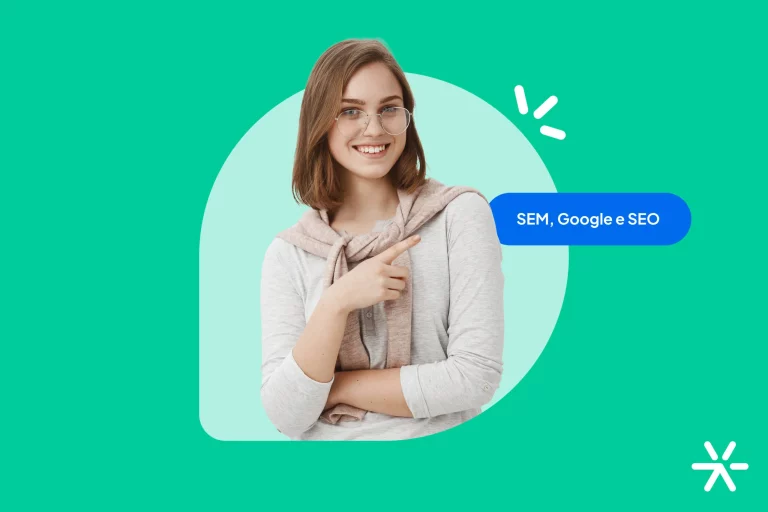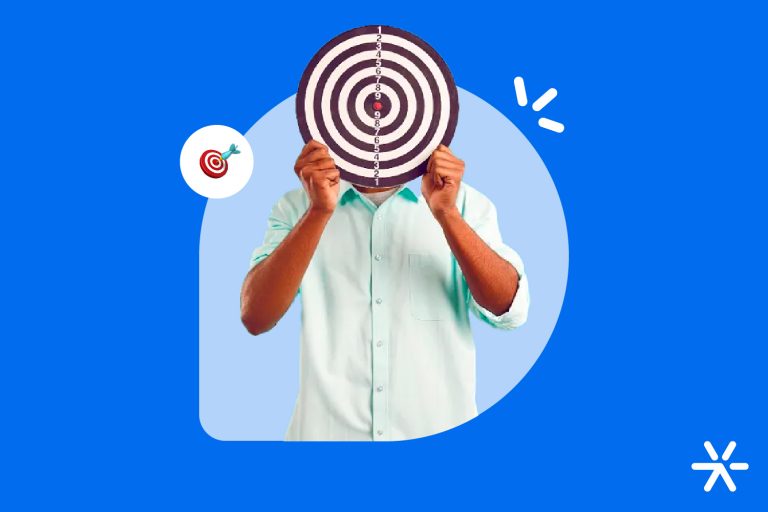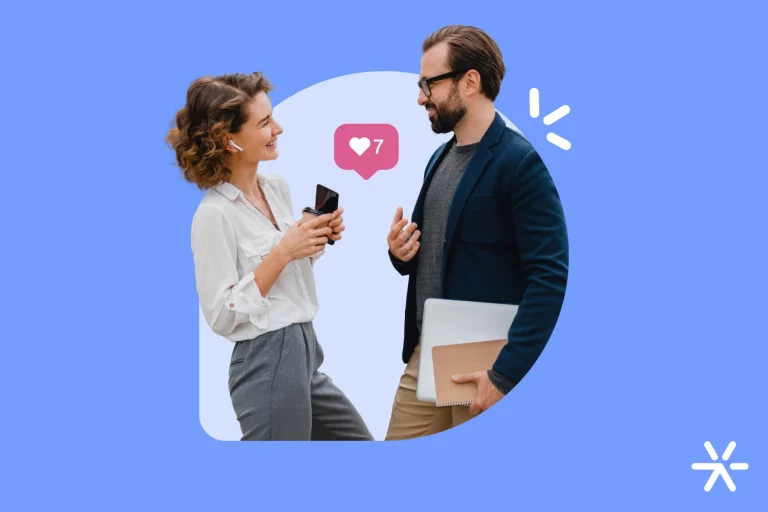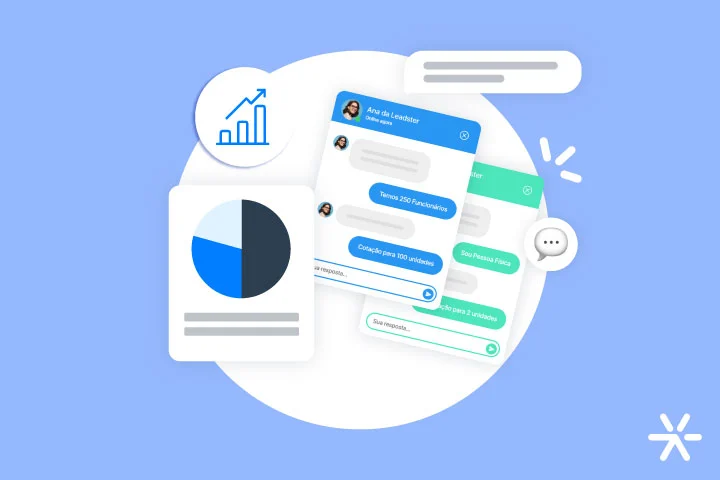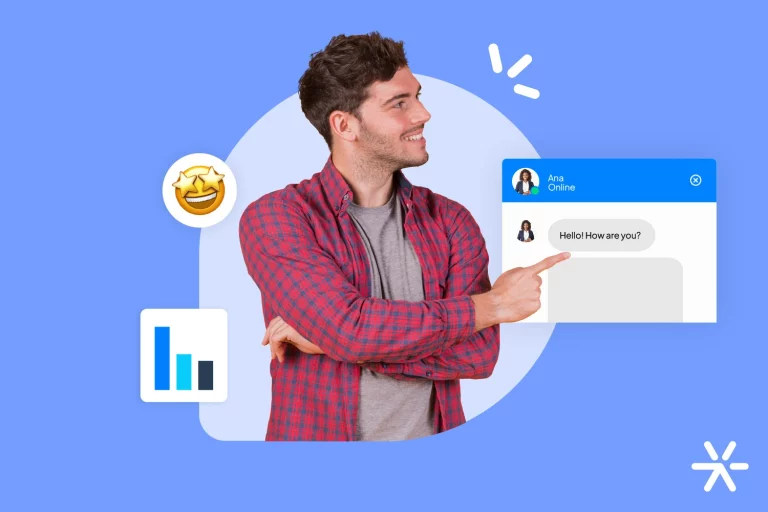How to Use a Chatbot in Digital Marketing? Successful Examples
The era of chatbots has arrived, and they’re here to stay. 🤖
And we’re not just talking about online chats or those AI robots that offer automatic answers to elaborate questions.
In fact, chatbots can – and should – also be used in sales, customer service, and, most importantly, marketing.
Today, we’ll focus especially on chatbots for digital marketing, which not only engage with users actively and personally but also play a direct role in lead generation and qualification.
Let’s learn more about these chatbots that offer personalized communication and provide substantial ROI with minimal effort, as 57% of surveyed companies reported in “Chatbots are here to stay – So what are you waiting for?”.
To start, answer this question: Do you know what a chatbot for digital marketing is?
If you still have doubts, then check out the answer below! 👇
What is a Chatbot for Digital Marketing?

As mentioned briefly above, a chatbot for digital marketing doesn’t focus on customer service and answering queries.
Instead, this type of tool works alongside the sales funnel, generating qualified leads, understanding consumer habits and interests, as well as gathering relevant information for the sales department naturally and spontaneously during an automated conversation.
In other words, we can say that a chatbot for marketing is responsible for guiding the consumer through the buying journey, analyzing each individual’s maturity in terms of conversion and offering the right type of persuasive content for them.
Great, now you know what a chatbot for marketing is! But what are the other types? Let’s delve into the subject now. Join me:
What are the Types of Chatbots?
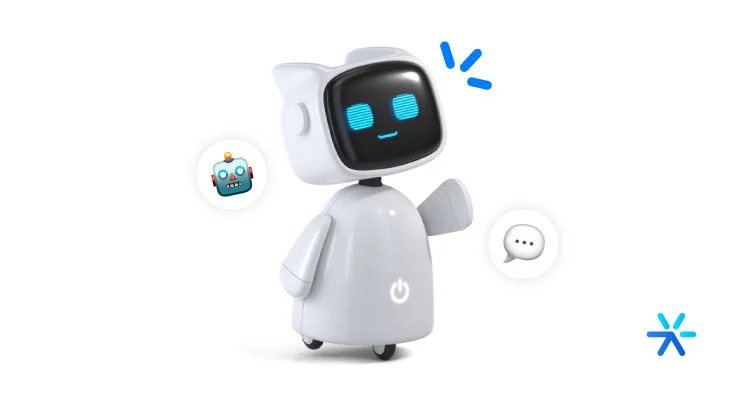
But we also need to understand that there are different types of chatbots in digital marketing.
Just saying “chatbot” is quite limiting. There are chatbot types that, although also used in marketing, are not exclusive to it.
Or rather: not all chatbots generate leads and advance them through the Marketing Funnel.
But that doesn’t make them less important for your strategy. It’s important to remember that marketing is holistic.
This means that it’s not only conversion-focused efforts that determine the success of your marketing.
Customer service is also important. Responding in a timely manner on social media is also crucial.
Sometimes, a comment responded to on social media can turn into a sale much later, simply because your prospect felt seen and valued by the brand.
Therefore, using chatbots in digital marketing is absolutely important and necessary.
I’ll list here the main types for us to discuss more about the topic. Come with me:
Chatbot for Lead Generation
Lead-generating chatbots, as the name suggests, are focused on lead generation.
That is, their main function is to engage with visitors at crucial moments, according to the category they are on the website and according to the stage in the Funnel.
For example: someone reading your site’s blog will receive chatbot messages related to the content they are reading, or seeking to offer denser material for conversion to happen:

But if a visitor is on your plans or pricing page, they receive a different message, Bottom of Funnel.
You can go even deeper into this marketing personalization. For example, you can qualify a lead by knowing their main needs and then offer personalized messages for their profile.
This is the power of Leadster, which is a lead-generating chatbot: bringing more touchpoints between your visitor and your brand, regardless of the Funnel state, and with extensive personalization.
But this isn’t the only type of chatbots. There are others. Take a look:
Chatbot for Customer Service
The customer service chatbot is the one that can perform an initial triage of your clients’ or prospects’ needs or even fulfill the request from start to finish.
To understand them better, here’s an example: imagine Mariana has a question about her credit card. She could call the hotline and ask her question or go to the website and see what she can find out.
She decides to first visit the website. There she finds a link for support. She starts chatting first with a chatbot, which asks for more information about her question.
If it’s something simple, the chatbot can resolve it right there. But if it’s complex, the chatbot has already captured the most important information, which speeds up the human agent’s work.
I used the credit card example because that’s probably the industry with the highest number of customers, questions, and complaints in Brazil today.
And also because, precisely because of this enormous number of customers, credit card companies are the ones that use chatbots for customer service the most today.
If you doubt this, go to your credit card app and see if there’s a chatbot available.
But this isn’t the only use of chatbots in digital marketing. We also have others. Take a look:
Chatbot for Social Networks
Social media chatbots are also gaining ground.
They mainly work to respond to comments and direct messages automatically. But also to initiate conversations and interactions with your brand.
A well-crafted message can lead a comment on social media to become a sale, believe me.
Especially if you create automatic messages that respond quickly and intelligently to your potential customer’s questions.
For example: “We have different plans available for our software. Which one would you like to know more about?”
With that, your prospect already knows that you have different plans, which helps prevent many questions about this topic.
However, some questions might still arise. And that’s where your team comes in.
You see how chatbots help make your customer service more efficient and scalable?
This is the power of technology applied to marketing: streamlining processes and reducing operational costs.
But let’s not stop there. There are other types of chatbots in digital marketing. Take a look at them:
Sales Chatbot
Finally, the sales chatbot is the one that actively engages in a sales conversation with your potential customer.
It’s like having a virtual salesperson on your site, ready to answer questions, overcome objections, and close deals.
Of course, in some cases, the chatbot’s work will end up transferring the conversation to a human agent, especially for complex or sensitive sales.
But in many cases, especially for simpler sales or for answering common questions, the chatbot can do all the work, leaving the human agents available for more complex or strategic activities.
This is the power of a sales chatbot in digital marketing: making your sales process more agile, more efficient, and, consequently, more profitable.
But you may still have doubts about how to create these chatbots, right? I can help you with that too! 🚀
How to Know If It Makes Sense to Have a Chatbot in My Marketing Sector?

Well, now that you already know the types of chatbots in digital marketing, we need to talk about the need to hire one in the first place.
How can you be sure if your brand needs one?
There are some key factors that clearly indicate the need to hire a chatbot for your website, especially when it comes to lead generation.
By the way, that’s what we’re going to discuss in this topic. Chatbots for customer service are important, but it’s quite easy to understand if you need one or not.
However, chatbots for lead generation are more complex and bring many reasons — sometimes hidden — that justify hiring them.
It’s quite possible that you’re facing at least one of these problems on your website right now.
Let’s understand them better to carefully evaluate hiring a chatbot in digital marketing?
Your lead generation is low
The main and most basic problem within a digital marketing strategy is the lack of leads on your website.
This can happen for many reasons. But I’m assuming here that you have a good digital marketing and content marketing strategy in place.
In other words, you’re making an effort to generate leads, but they’re not coming.
A chatbot in digital marketing helps you with this by providing a more personalized conversion offer, and therefore, more effective.
Lead generation is usually done through forms, pop-ups, and landing pages. But none of these approaches is personalized.
With a chatbot, you can bring targeted messages not only based on what your visitor is reading on the site but also based on their stage in the Funnel, as we’ve discussed so far.
That’s why a chatbot has the power to triple your lead generation in a very short time.
Special highlight for the “very short time.” Your strategies are already in place. You’ve already done the work you needed to do. The chatbot helps you reap the rewards!
Your leads are not qualified
Generating leads is great, but that’s just the beginning of the journey. You also need to qualify them for the Marketing Funnel to progress.
It’s very common to find companies stuck in this first stage. It’s a reflection of Brazil’s maturity in digital marketing and the fear that many have of investing in it.
A chatbot can ask qualification questions at the time of conversion, generating leads that are already qualified for your sales team.
With this, your lead generation becomes faster and at the same time much more assertive.
Sales and marketing are not well integrated
This is also a classic problem in many companies.
Marketing and sales are not two different departments. In fact, they are the same big department, divided into distinct areas but with the same goal.
Marketing is, by definition, the efforts made to bring a brand — and consequently, a product — to the market.
Because of this, its goal is the same as the sales team: to sell.
What happens in practice is a huge lack of integration. Marketing generates leads and sends them to the sales team, which then contacts them.
A chatbot brings more integration to both teams precisely in this lead qualification process, which becomes much more evident with it, and in sending leads for contact.
With the Leadster chatbot, for example, a visitor on one of your product pages can convert, be qualified, and even be sent to the sales team in order within a few minutes.
The whole process is automatic. The marketing team won’t need to organize leads, create email marketing campaigns for qualification, create a spreadsheet with the information of qualified leads, and only then send them to the salespeople.
The chatbot does all of this and in a few minutes, automatically.
Overload of sales and marketing teams
This penultimate paragraph about the marketing team’s work is a big red flag of the team’s overload.
Normally, the work of generating leads, qualifying them, and sending them to sales is done in separate timelines and pipelines.
The email marketing campaign for lead qualification that is sent today will generate leads for sales a week from now.
And in that next week, the marketing team is already organizing another similar campaign, while also sending the list of leads to the sales team and organizing materials to generate leads as well.
It’s all a big cycle that never ends, and often leads to overload.
The sales team ends up being hostage to the speed of the marketing team, which hinders their goals and schedule.
With the advantages we’ve seen together so far, it’s very clear that the chatbot in digital marketing helps a lot to relieve both teams and generate more and more sales.
You’re not generating meetings
Another very common problem in brands that offer a more personalized service is the difficulty of generating meetings automatically on your website.
And mind you: when you can’t generate meetings automatically, you end up having difficulties generating meetings, period.
This is because, thinking about a manual lead qualification process, you are depending on all the work of the marketing team to get a meeting.
The team needs to generate the lead, qualify it, send it to the sales area, which will contact the lead and only then schedule the meeting.
There are 5 steps to get to a meeting. Even with the best marketing strategies in the world in action, you end up losing contacts due to the complexity of the operation.
A lead generation chatbot can do all this work automatically. The lead is generated, qualified, and can schedule their meeting directly with a salesperson through the chatbot itself.
This meeting is then saved in the salesperson’s agenda, who only needs to attend and sell.
What Results Can I Expect to Achieve with a Marketing Chatbot?
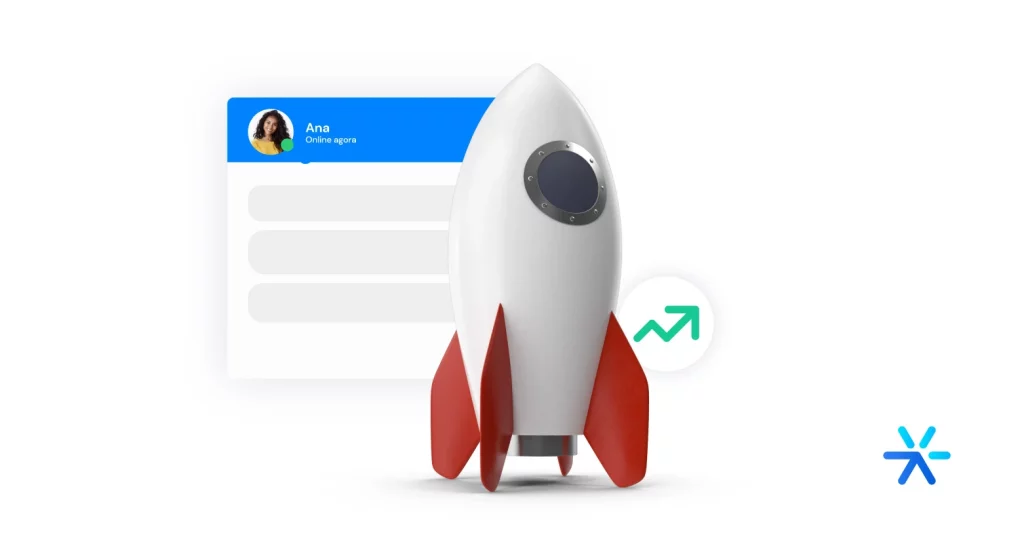
The results you can achieve with a marketing chatbot are the solutions to these problems we enumerated in the previous topic.
And I say “problems,” but at the same time, I also know that for those experiencing them, they are big problems, indeed.
But look: what determines the size of a problem is not the impact it causes, but the complexity of its solution, don’t you agree?
A thorn in your foot is a minor problem because it’s easy to remove. Falling into a thorn bush is a big problem because now you have thorns all over your body! 🌵
So, these problems cause serious pains in the company, but the simple solution is to install a chatbot and work together with it.
But how exactly does the chatbot solve these problems? What results can you expect when hiring such a tool?
Let’s talk about that now. And right after, I’ve brought some success stories to help you understand in practice everything we’ve discussed so far.
Let’s go:
Chatbot in Digital Marketing Examples
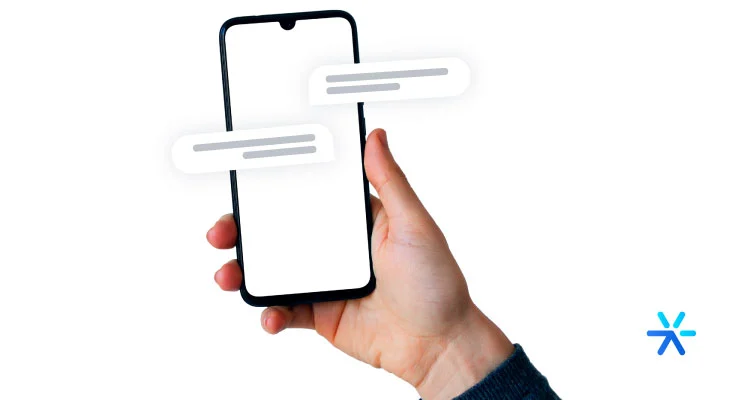
There’s nothing better to prove the effectiveness of a marketing chatbot than with real practical examples, right?
Right below, you’ll find 4 examples that elucidate the use of a chatbot in digital marketing!
Chatbot with lead location for a real estate agency
Before knowing about Leadster’s marketing and sales chatbot, Rafael Cássio Real Estate had a conversion rate below the market average.
Rafael Cássio, Owner and Real Estate Advisor, knew he needed to send more opportunities to the sales funnel so that his brokers could generate new businesses regularly.
While looking for ways to improve, Rafael came across the concept of conversational marketing and then discovered Leadster, which offered a marketing chatbot.
“From there, everything happened very quickly: on the same day, the chat was already installed on my website. And in that same week, I started to notice an increase in clients interested in real estate,” Rafael says.
The real estate agency took advantage of the various features of the tool, from personalized calls, A/B tests, qualification and distribution, to location – the company’s favorite.
Before the chatbot, when a lead converted on the website form, Rafael received that contact in his email and forwarded the message to a broker to continue the service. But the broker still needed to register that lead in the system before finally contacting them.
In the new process with the marketing chatbot, the client who converts in the chat goes directly to the sales CRM through an integration, already within the salesperson’s pipeline.
According to Rafael, within a minute and a half, his team makes contact with the client while they are still on the website, analyzing the property.
Moreover, the favorite feature of the Real Estate Agency was Lead Location, for Rafael:
“In my understanding, when I see that my client gets in touch and comes from a certain city, I already remember that I already have clients from that same city, so the conversation becomes better because I can create connectivity. I can bring a reference regarding that location, which helps me a lot.”
Chatbot with personalized calls by service for a logistics company
In this case, let’s learn about Log10, a logistics company, and Lamp Agency, Leadster’s partner.
When Lamp started working with Log10, the company received a good volume of leads through campaigns. These leads were converted through a form or WhatsApp button, available only during business hours.
However, even with leads converted in the form, the company still received them via email and needed to manually qualify each one.
In the conversion through the WhatsApp button, the lead was forwarded to contact with the sales team, which needed to gather information and also qualify each one.
Not very functional, right? After all, the team wasted a lot of time, effort, and didn’t get many results. Also, the service often took a while to happen. In areas like medical logistics, requests requiring immediate attention are common, so time is an important asset in this process.
Until Lamp discovered Leadster just when it took over the Log10 marketing area and thus created the account for the client and began exploring the possibilities within the tool.
“Basically, the conversion focus is totally on Leadster because we can make the flow much more assertive, with more direct information, something that reaches the commercial team much faster,” Rodrigo Mesquita, Marketing Consultant at Lamp, says.
This case mainly explored personalized calls, segmentation flows, and simplification of qualification questions for each of Log10’s pages, as the company served various sectors, such as air, road transport, customs, motoboy, etc.
Let’s look at Log10’s examples and how it uses different calls on each page:
- Medical Area Transportation – “Need Transportation for the Medical Area? Click here! 👍”
- General Warehouse and Fiscal Branch – “Need General Warehouse and Fiscal Branch? Click here! 👍”
- Hospital Logistics of Instruments – “Need Hospital Logistics of Instruments? Click here! 👍”
- Promotional Logistics – “Need help with Promotional Logistics? Click here! 👍”
- Delivery Services – “Need a delivery service? Click here! 👍”
- Customs Transportation – “Need Customs Transportation? Click here! 👍”
- Air Cargo Transport – “Need Air Cargo Transport? Click here! 👍”
- Road Cargo Transport – “Need Road Cargo Transport? Click here! 👍”
Mesquita, finally, comments that:
“[…] it becomes a much more assertive and much faster process within the house. Which, in the end, translates into more sales because the process is much faster. In addition, we were able to do much more with much less investment. And then we can have these savings to think more about a specific strategy.”
Chatbot to schedule commercial meetings in a B2B software company
We know that scheduling meetings with leads can be a challenge. This was the scenario faced by Contraktor, a digital signature and contract and document management startup.
The company already used Leadster’s marketing chatbot, but still had difficulty scheduling meetings with leads, having to invest a lot of time and effort without getting many results.
Until Contraktor discovered the new meeting scheduling feature and decided to test it.
“We did an analysis looking at the 30 days before and after testing with the feature. And the overall result with the tool running was really better,” says manager Rafael Salomão.
In addition to achieving new meetings and positively impacting the conversion rate, the manager pointed out the increased productivity of the team as an essential point for Contraktor, as well as the optimization of the process:
“Sometimes we took 3, 4 days to talk to the lead after they raised their hand; now it’s faster, on the same day or at most the next day.”
WhatsApp Integration in an education company
Finally, we have the story of Pós PUC PR Digital, a higher education company.
The situation was as follows: launching a new course during a pandemic, economic crisis, and social distancing. Because of this, instead of attracting more clients, the company saw students leaving the classrooms until they thought about launching an innovative and distance course.
However, even with the course launched, PUC PR found another challenge: there were many visitors for few salespeople; they wouldn’t be able to handle it.
Until the college discovered Leadster and replaced its old WhatsApp button with the marketing chatbot.
Right from the start, the main problem was solved through the proactive and instant approach of Leadster’s chatbots. From then on, only qualified leads were directed to WhatsApp, where they could already be added to a relationship rule.
Head of Marketing, Jhieizer Santos concluded that:
“Leadster fit like a glove in our strategy, bringing us the virtual assistant and activations via WhatsApp, where we managed to double our conversion rate from users to leads.”
Create your Chatbot in Digital Marketing today!
What can I say: you’ve seen through the article that chatbots work. And that Leadster’s expertise is in generating leads with said chatbot.
So there’s only one more question remaining? What are you waiting for?
I’ll be waiting. See you there!



